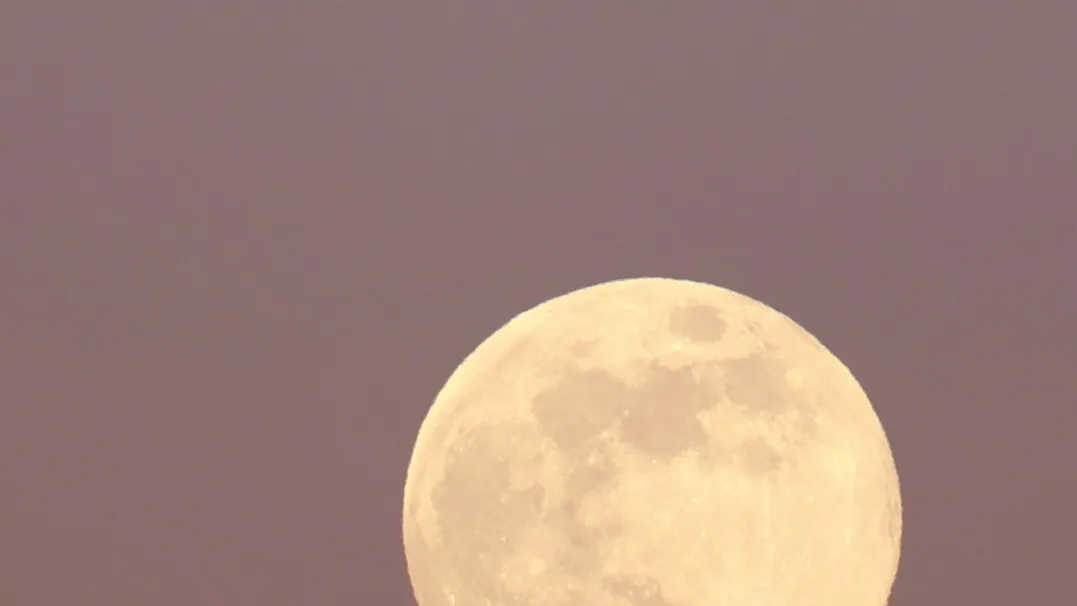As 2025 begins, so comes the first full moon of the year.
2025’s first full moon will be the last of four consecutive supermoons, according to NASA. But it’s a pretty eventful lunar phase.
Monday’s full moon has a lot going on, which would make anyone want to howl with delight, especially since this month’s moon is known as the “wolf” moon.
The full moon is called the wolf moon because of the idea that during January’s long, cold and dark nights, wolves make sure everyone can hear them.
And, while those wolves are howling, the moon will also cover Mars. But the red planet will literally have its moment in the sun and shine as brightly later in the week.
Mars will be hidden during an event known as the lunar occultation, which is rare, but will happen Monday night.
Here’s what to know about the wolf moon and other space occurrences.
Mars in opposition:See why the Red Planet will appear closer and brighter
How did the wolf moon get its name?
The year’s first full moon is best known as the wolf moon since the howls of wolves were more likely to be heard during winter, according to the Old Farmer’s Almanac.
But these names are cultural and have nothing to do with science, Caroline Simpson, an Astronomy professor and chairperson at Florida International University, told USA TODAY.
Thought to have been brought to North America by European settlers, the name may be a bit of a misnomer.
While wolves certainly howl, experts say there is no evidence that they’re doing so at the moon, or that its celestial phases have any bearing on wolf calls. Rather, because wolves are nocturnal animals, they are generally more active at night.
When will the moon be opposite the sun?
The moon will be opposite the sun Monday at 5:27 p.m. ET, according to NASA. This is when the moon reveals its full dayside to Earth.
The moon will appear full for around three days.
Wait, will Mars disappear?
Mars won’t become invisible, but it will be covered up by the moon after shining brightly.
“Mars is playing hide-and-seek with the moon,” Andrew Fazekas, the communications manager for Astronomers Without Borders, told USA TODAY.
The phenomenon is known as an occultation, which happens when one celestial object passes in front of another, according to NASA. So, while Mars won’t actually disappear, it will be hidden behind the moon. The occultation will happen at a different time, depending on the location of the viewer.
The last time Mars was occulted by the moon was on Dec. 7, 2022, according to NASA.
Both the planet and the moon will be bright enough to see in big cities filled with light pollution and through hazy or partly cloudy skies, according to Fazekas. While clear skies are ideal, people will mainly have to worry about light pollution from the moon outshining Mars, but they can cover the moon with their thumb to get a better look.
The main obstacles that would block a person’s view are buildings, trees and a completely cloudy sky.
To have the best view possible, Fazekas said it’s best to use either binoculars or a small telescope.
Mars reaches opposition
While the occultation is happening, both the moon and Mars will shine incredibly brightly.
“Mars and the moon will compete in brightness,” said Fazekas.
That’s because Mars, like the moon, will enter opposition.
By Thursday evening, the planet will be its brightest as it fully reaches opposition and sits directly opposite the sun, as seen from Earth. Fortunately, Mars will be just as bright on Monday as it will be on Thursday, according to Fazekas.
Comet spotting: A one-in-160,000-years chance for some
A comet will be spotted near the constellation Sagittarius, and will be so bright it could potentially be visible by the naked eye, according to Star Walk. But, according to the Planetary Society, people may need binoculars or a telescope to see the celestial object.
The rare comet, C/2024 G3 (ATLAS), was discovered in April 2024 and has an orbit that spans around 160,000 years, according to the Planetary Society.
During the beginning of the week, the comet will be too close to the sun to see. Still, it will move away and people in the Southern Hemisphere will have an easier time viewing the comet, according to Fazekas.
He added that viewing the comet might be better left to more advanced backyard astronomers because of how close it is to the sun.
Julia is a trending reporter for USA TODAY. You can connect with her on LinkedIn, follow her on X, formerly known as Twitter, Instagram and TikTok: @juliamariegz, or email her at [email protected]



